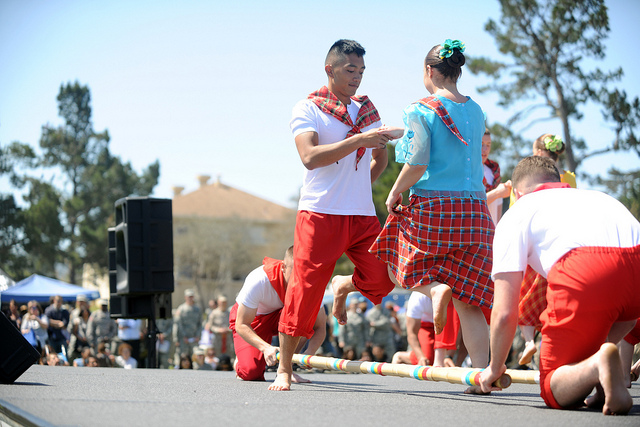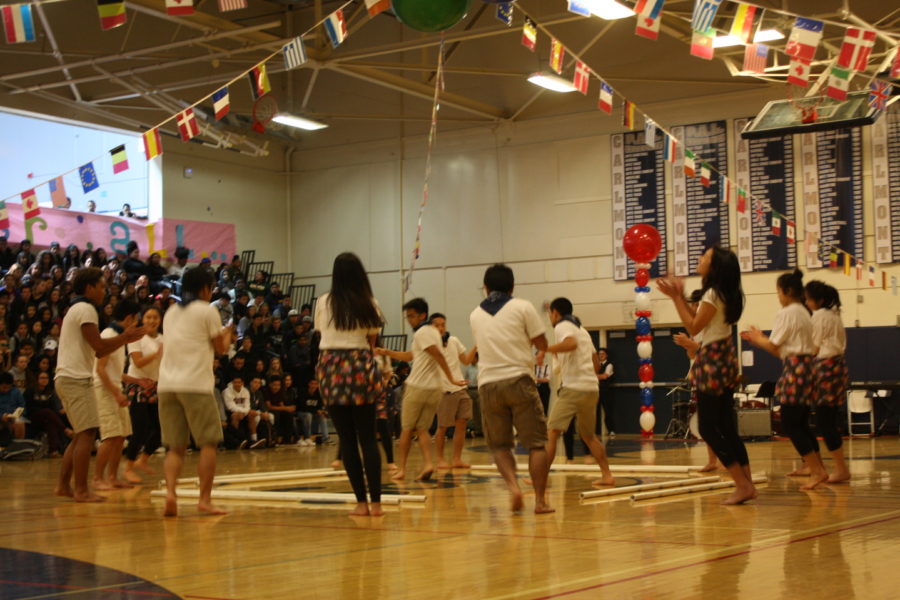This year Filipino Club is participating in Heritage Fair to share a bit of Filipino culture with a traditional folk dance called tinikling.
Every year, Carlmont celebrates the diversity of our school at the Heritage Fair with different clubs participating in the assembly and selling food that represents their culture. Some perform traditional dances or songs, while others share food that represents their heritage. This year students get to experience a bit of Filipino culture by watching an intricately coordinated dance.
“It took a lot of practice to get the hang of it, but now we all enjoy it and have a great time,” said Tyrese Lopez, a junior one of the dancer performing at heritage fair.
The club has spent countless hours over the past month practicing the dance. Sometimes at lunch in the gym and after school at different and hopes that the students will enjoy this fun dance and reflects Filipino culture.
“The dance is called tinikling and it’s a traditional Filipino folk dance. We picked it because we understand the importance of knowing our roots and we want to celebrate our heritage with everyone,” said Liam Jocson, a senior and president of the Filipino Club.
Tinikling is different from other dances with its unique form and traditions from the Philippines. This dance typically involves two to four long bamboo poles that are parallel and held by people kneeling, also known as clappers. The clappers tap and slide the sticks on the ground as the dancers dance across them. Additionally, the sticks serve not only as a beat for the dancers to follow but also as a moving obstacle making the dance more complicated and exciting to watch.
“Tinikling definitely puts a larger emphasis on footwork, as the dancers have to make sure their foot is in the air when the people on the ground clap the sticks together,” said Jocson.
The footwork of the tinikling dance mirrors the movements of a tikling bird as dancers meticulously skip across the moving poles. The dance also imitates the agility of a tikling bird as it maneuvers through trees, branches, stems, etc.
“Tinikling started by imitating the “tikling” bird, a small bird that can maneuver through trees, branches, bamboo, etc, so the dancers move across the poles gracefully to imitate the bird,” said Jocson.
The intricate footwork the people holding the sticks, also known as the clapper, have an equally important role in the dance of keeping the rhythm for the dancers to dance to.
“A big part of the dance requires the people controlling the sticks to be able to keep time with the music, and in sync with the person on the other end of the sticks,” said Miranda Wong, a senior and one of the clappers performing in the dance.
Although the rhythm was hard for newcomers to grasp and the dance step took some getting use to, the club did not give up. Instead, they spent countless hours over the past month practicing the dance at lunch in the gym and after school at Jocson’s house.
“Filipino Club has become a family, and we all got so much closer as a group and it creates such an amazing atmosphere for everyone,” said Tyrese Lopez, a junior and one of the dancers performing at Heritage Fair.
The club hopes that the student body will enjoy watching the dance as much as they enjoyed practicing it.
“Join Filipino Club! We eat good food!” said Jocson.



